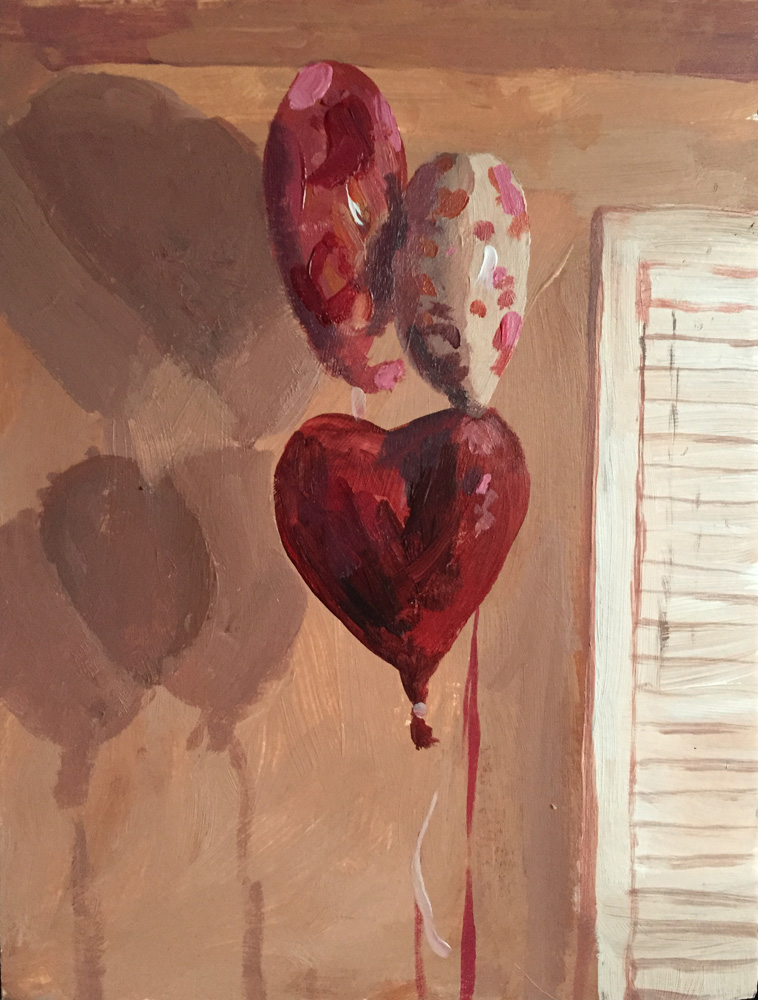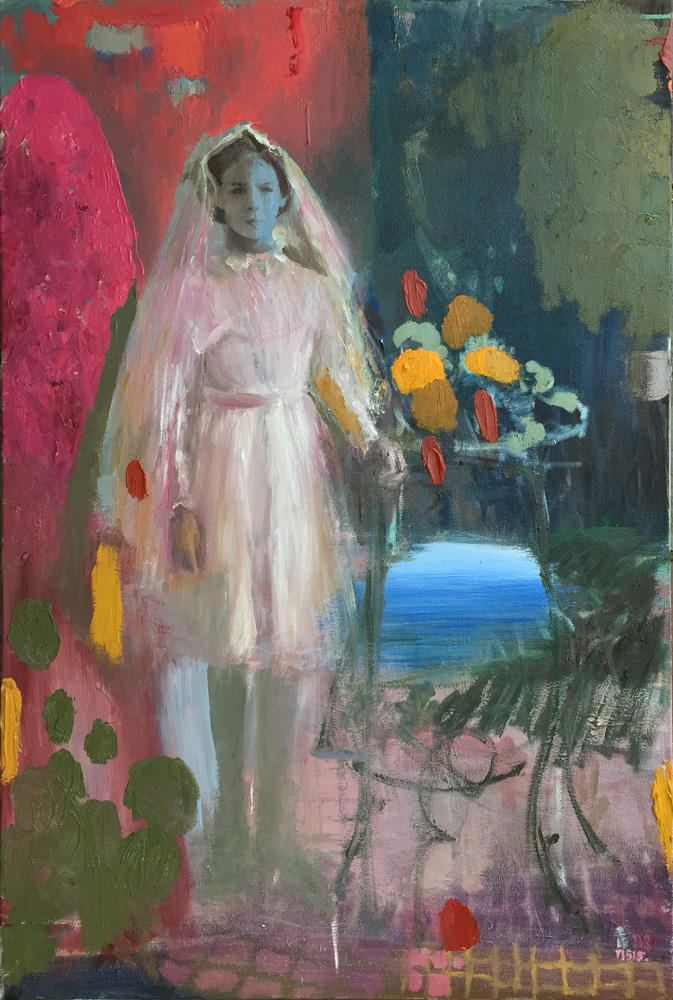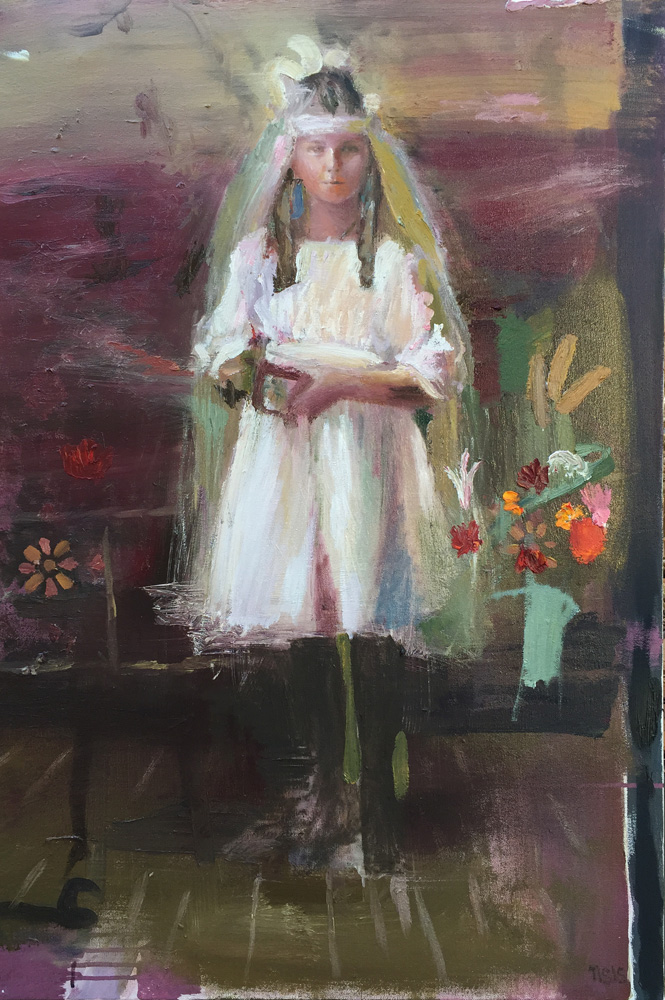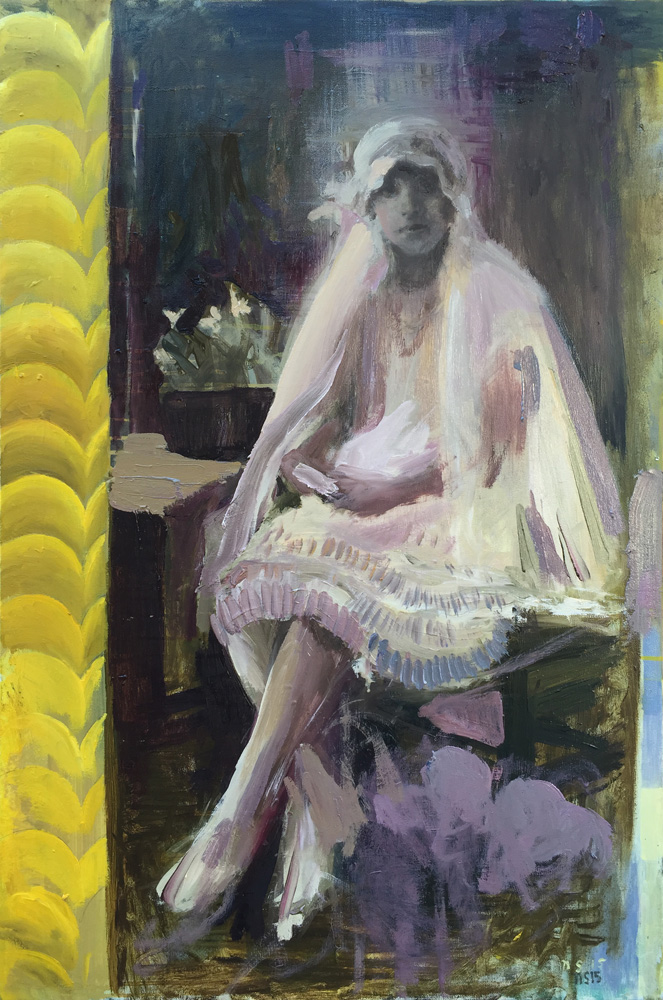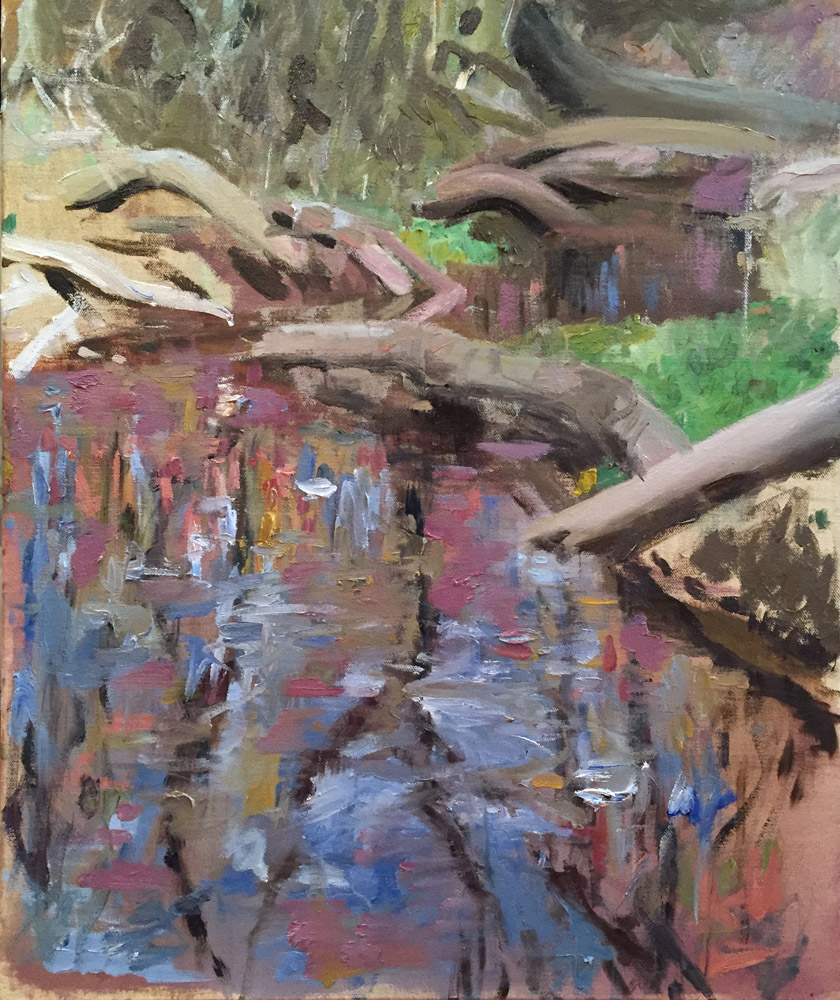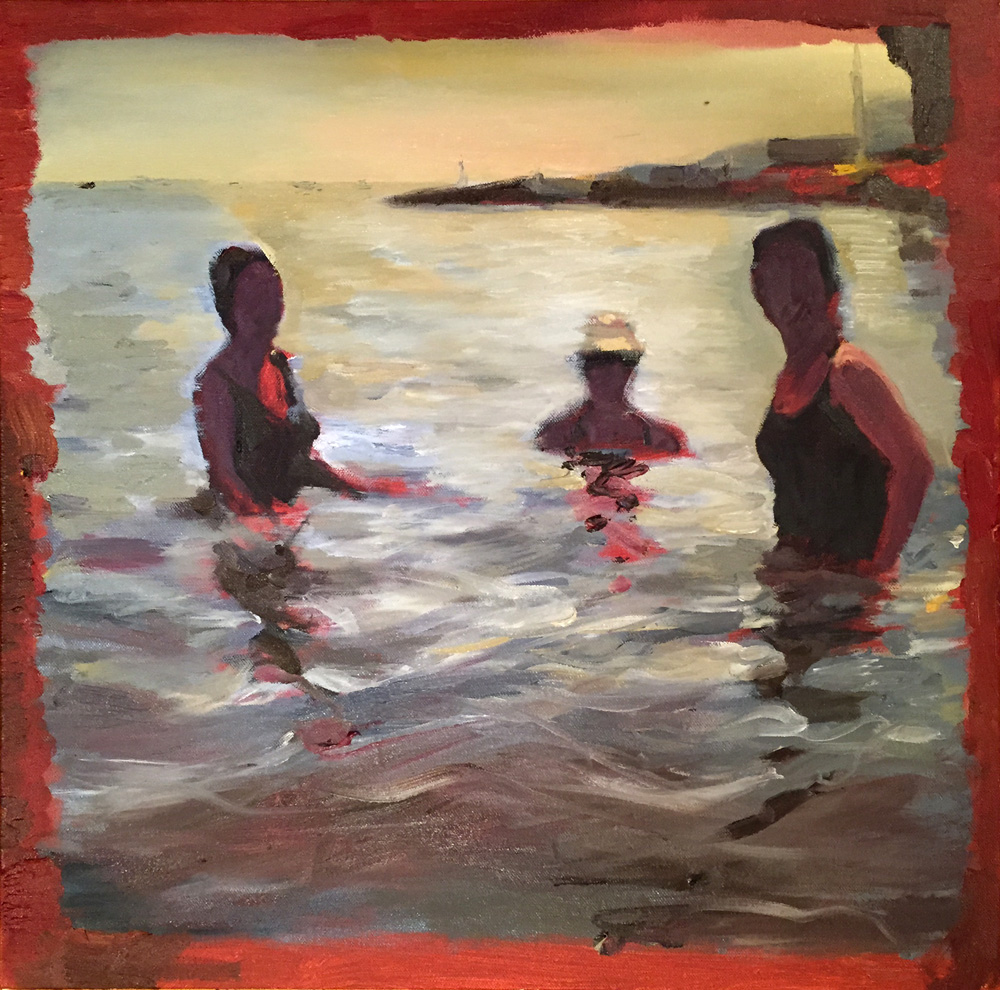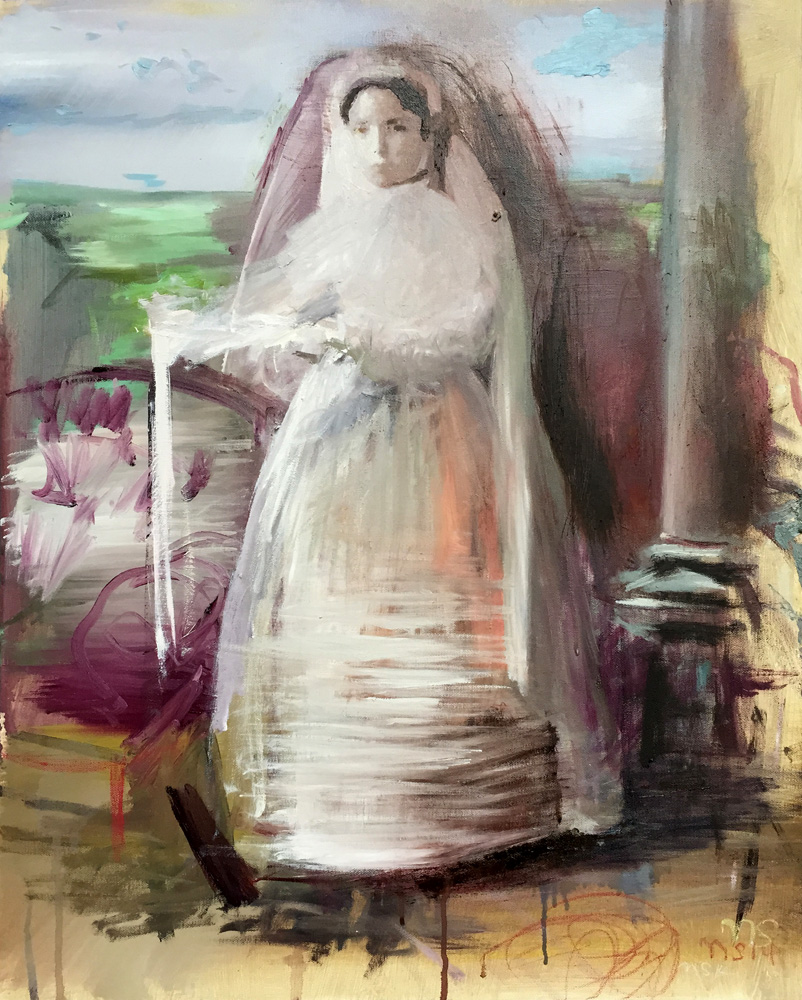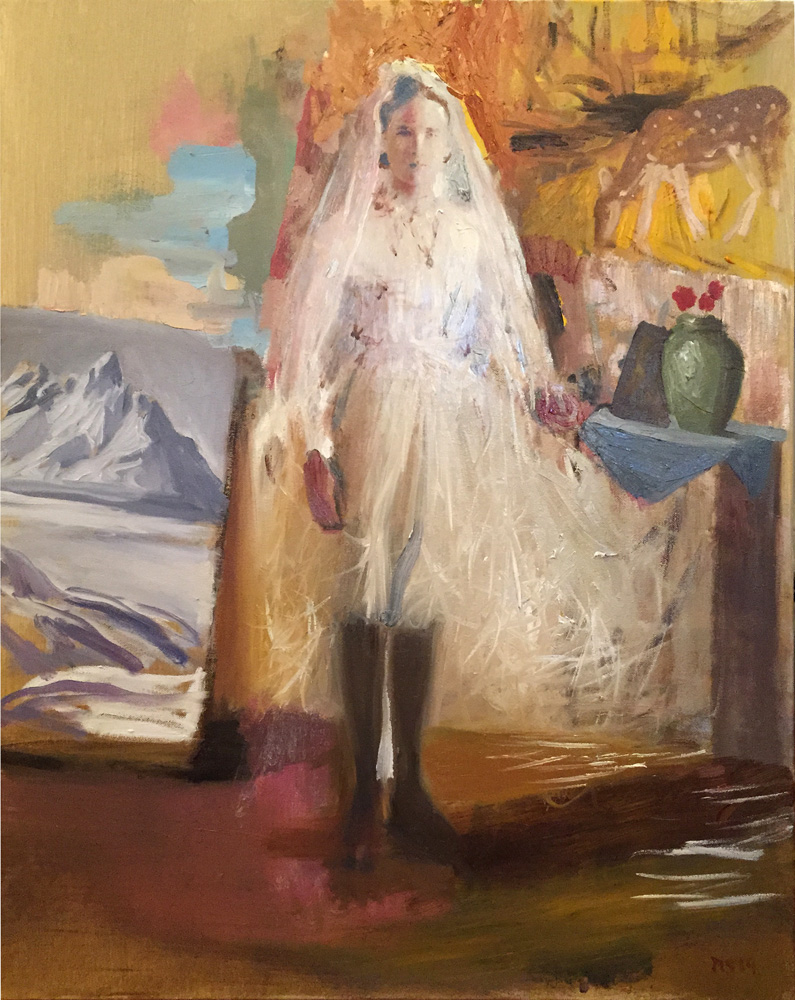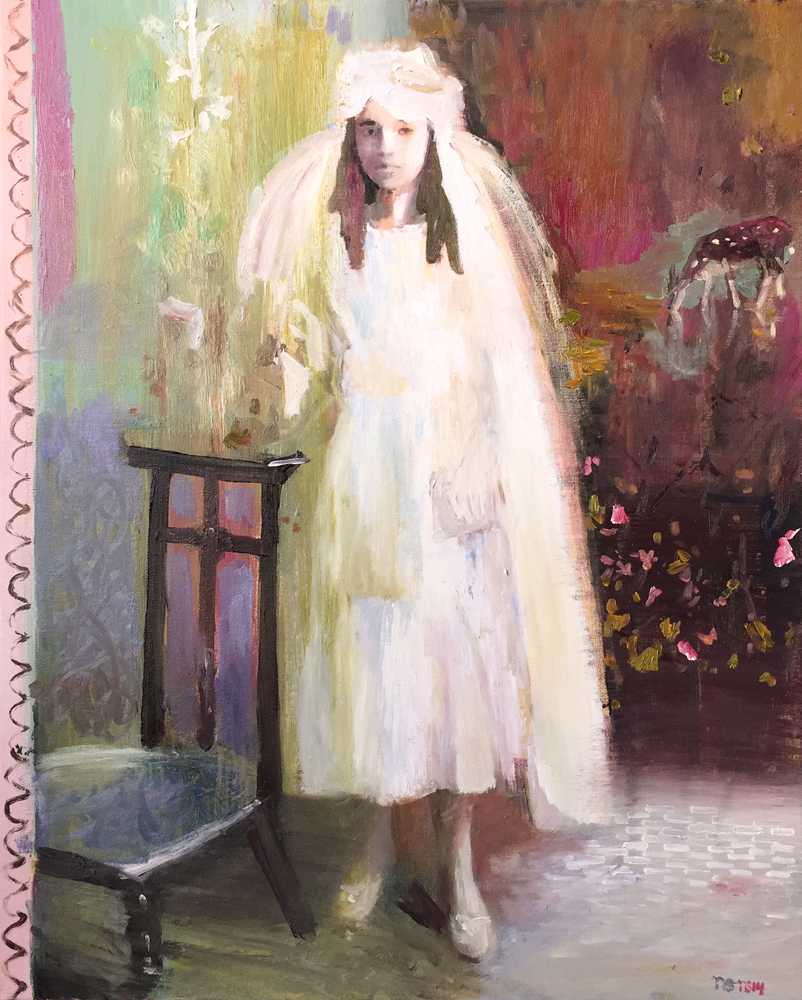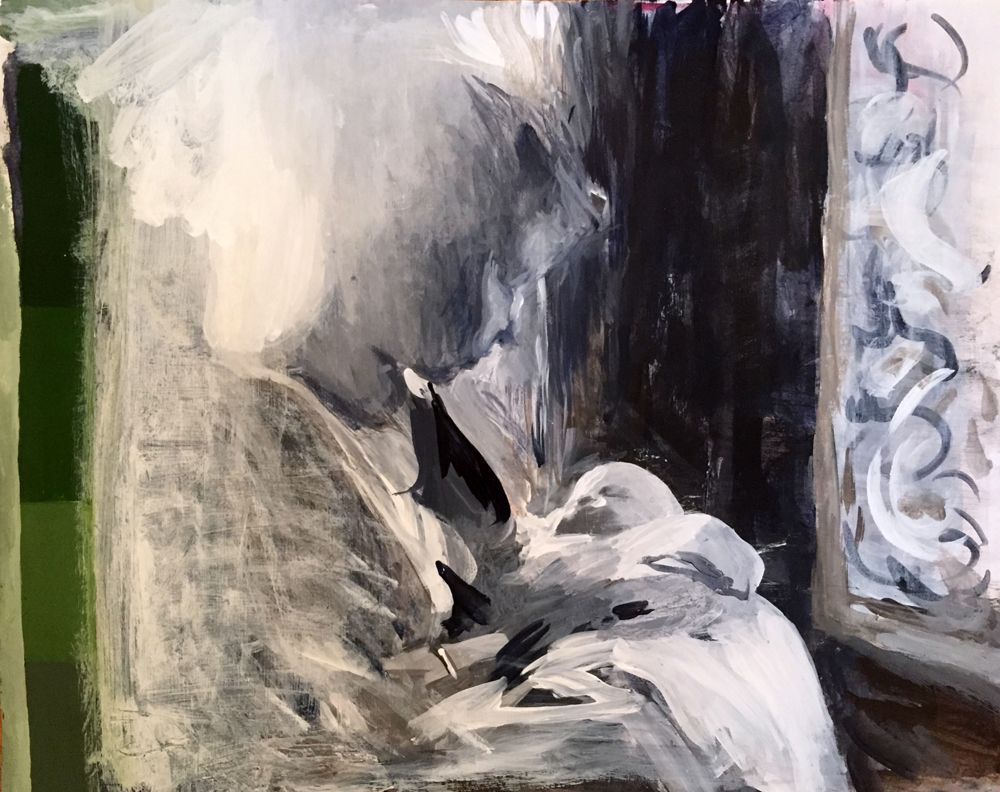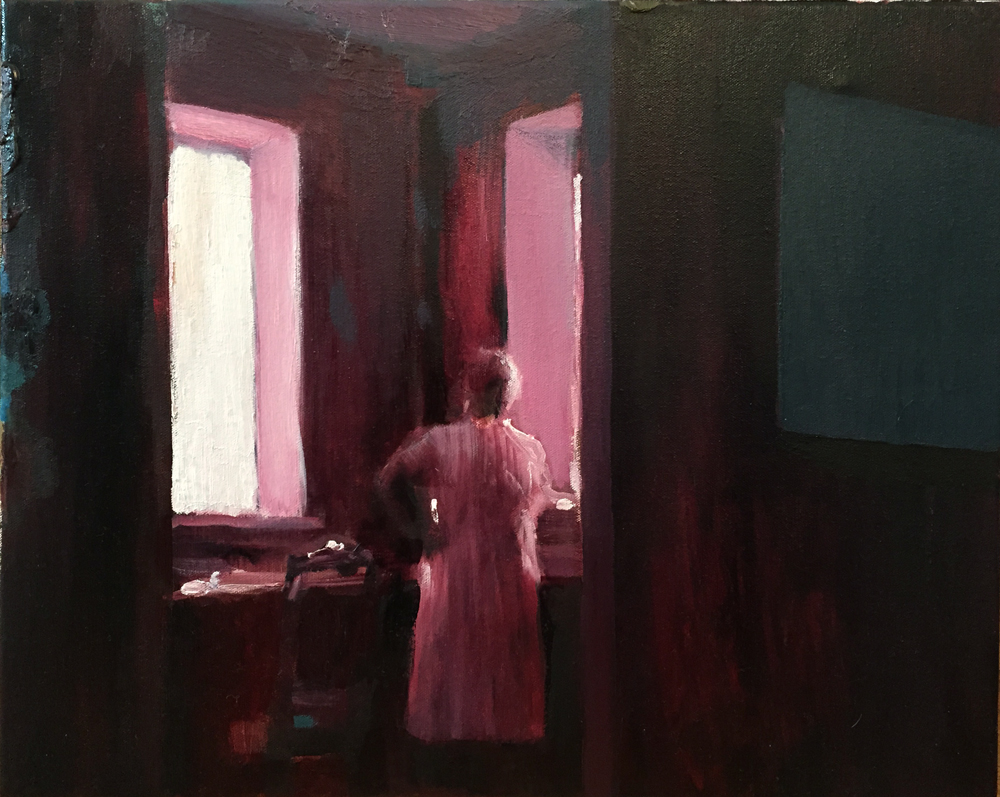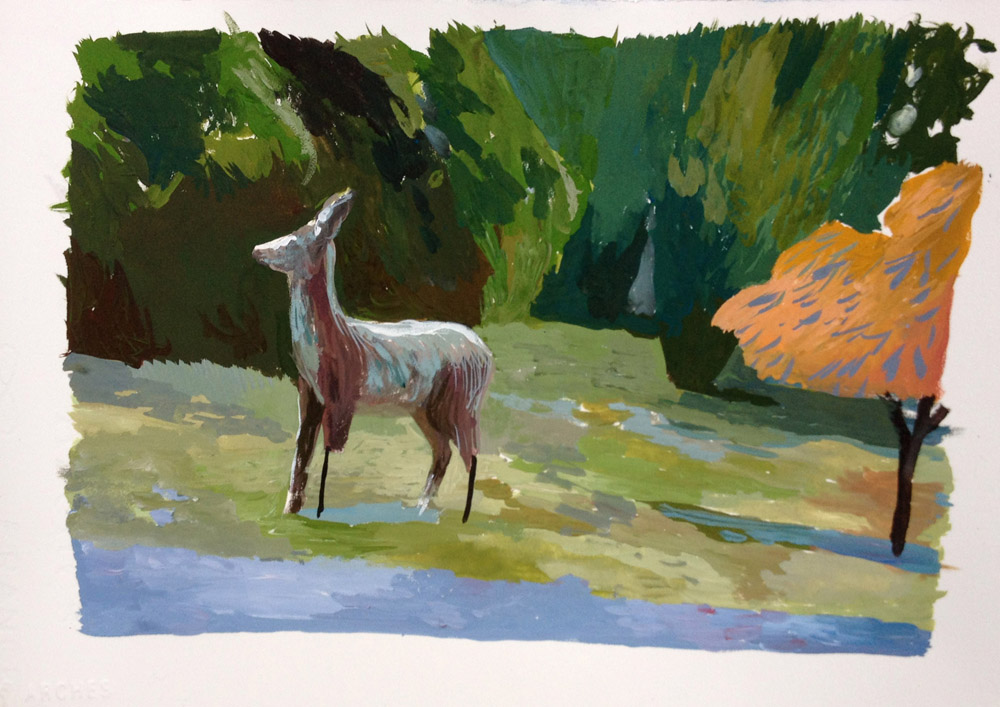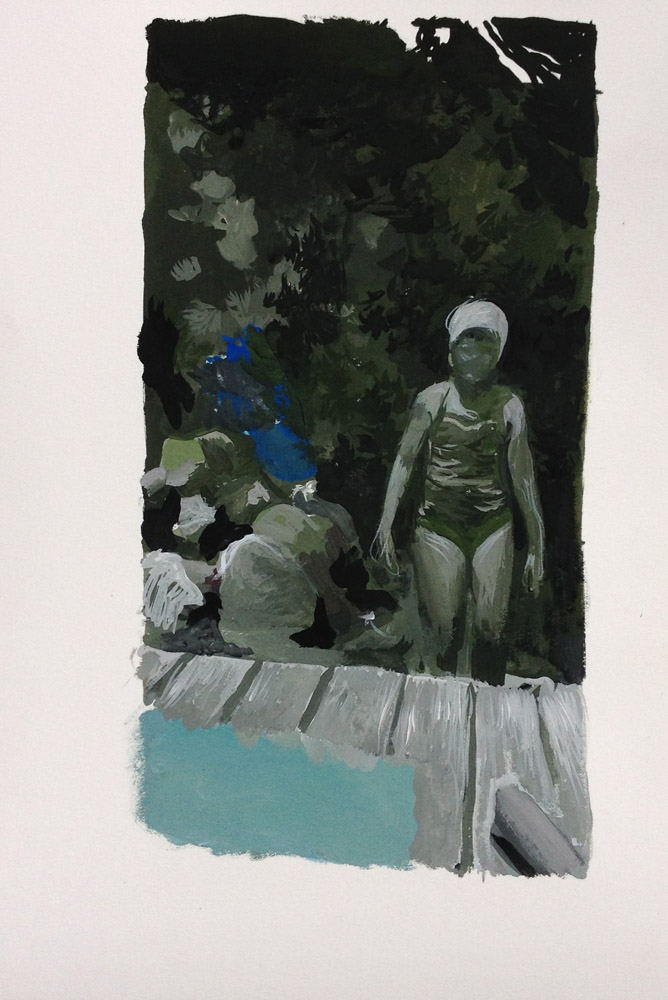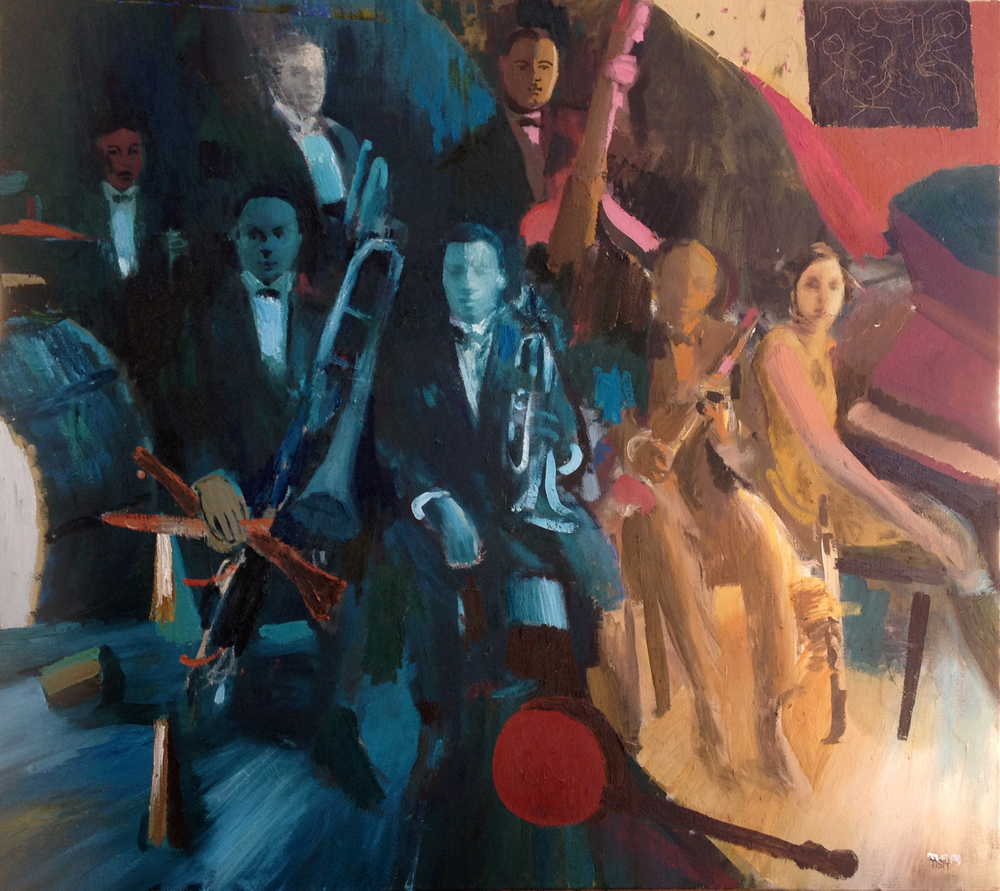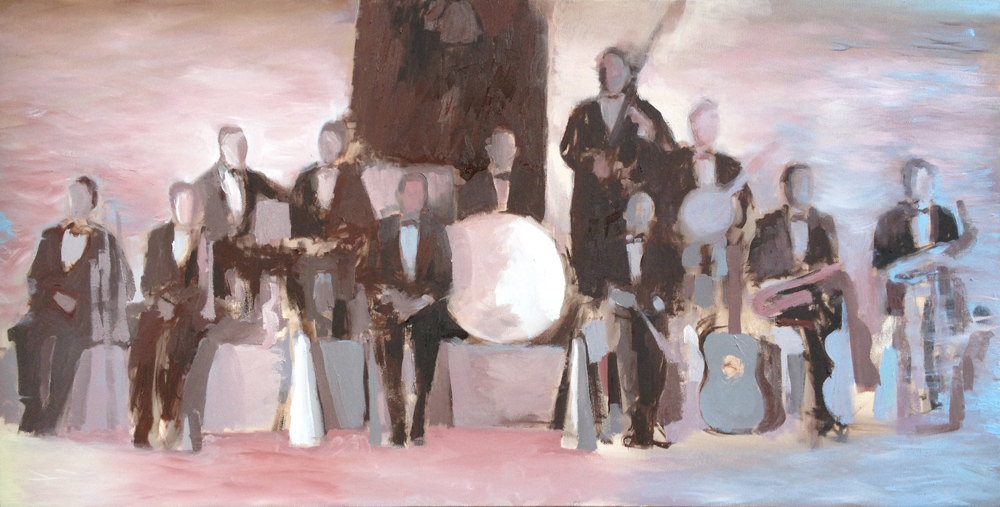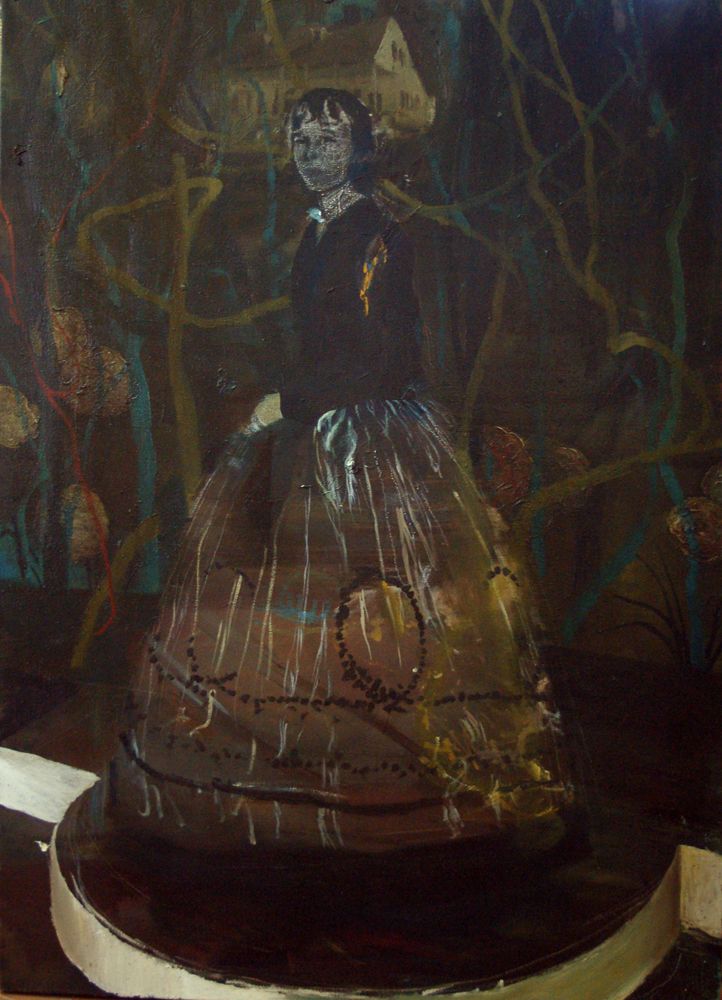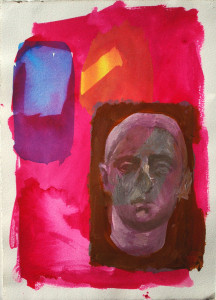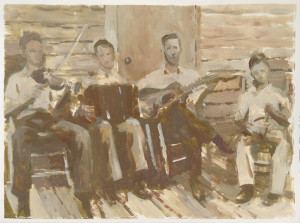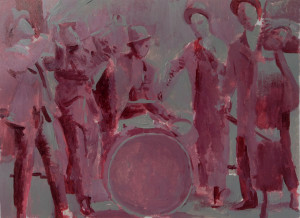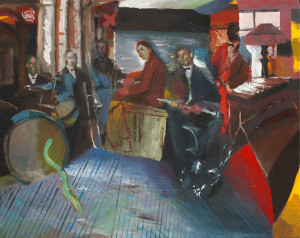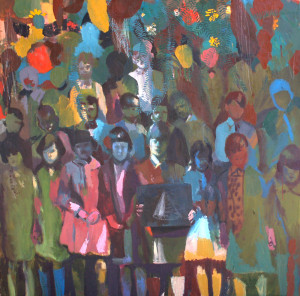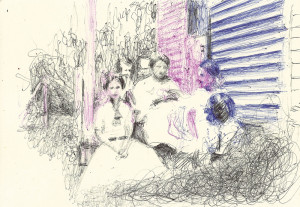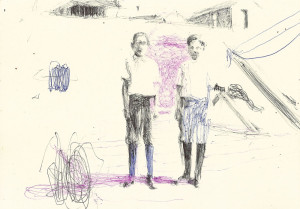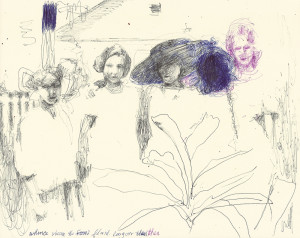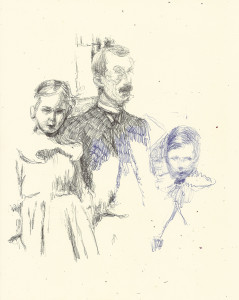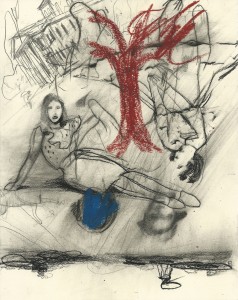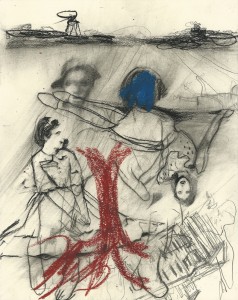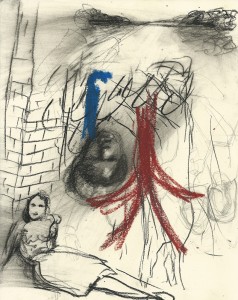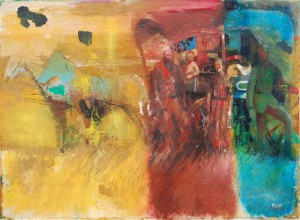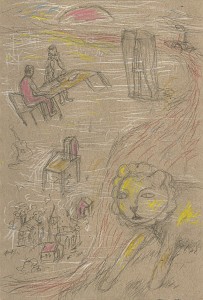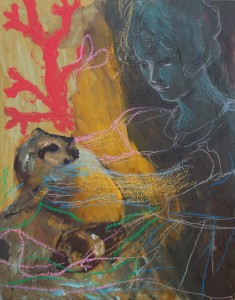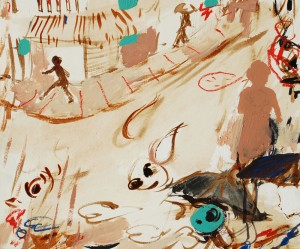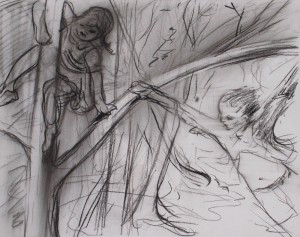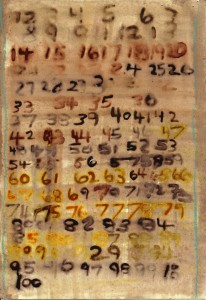gallery
Carte de Visite #11
Carte de Visite #10
Carte de Visite #9
Hunt’s Woods
Red Swimmers
Carte de Visite #8
Carte de Visite #7
Carte de Visite #6
Carte de Visite #5 (Horned Owl)
30″ x 40″
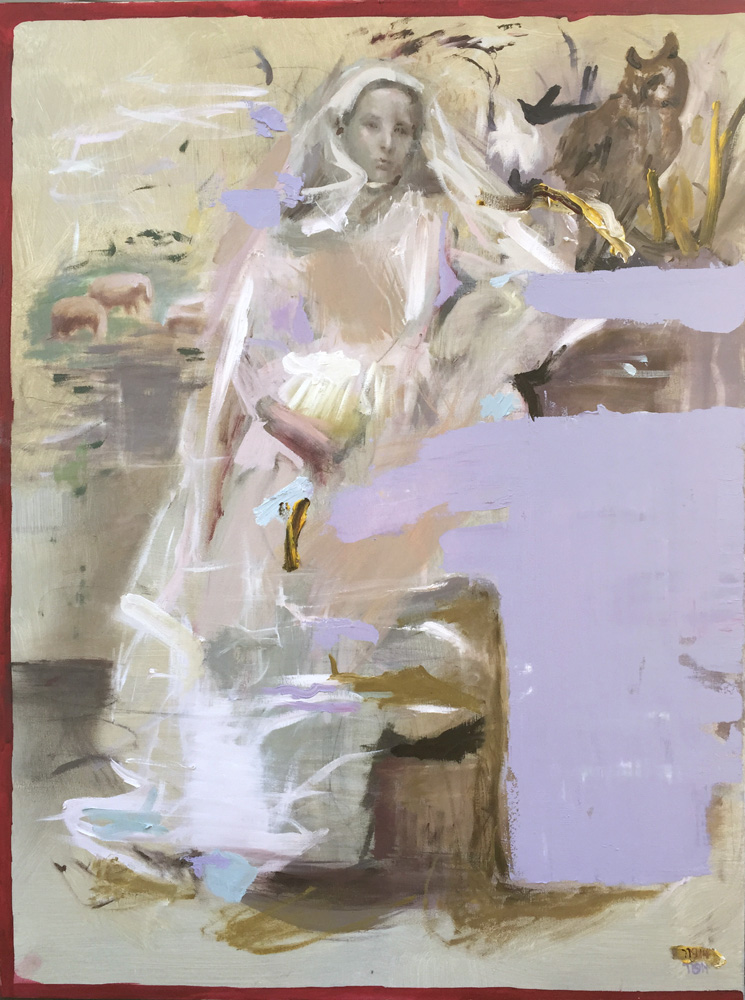
I’m delighted that the New York Public Library put up a post on their Tumblr about my “Carte de Visite” paintings. Here is THE LINK a few thoughts about the ongoing series. Did you know Daguerre also invented the diorama? News to me. There’s a guy to have lunch with when the time machine comes together.
The uniformity of the carte de visite photos is intriguing to me. Often one figure is surrounded by studio props – rocks, birds hanging from the ceiling – in front of a painted backdrop of a landscape. It can actually be hard to tell where the room ends, and what is real, like one of those great dioramas at the American Museum of Natural History. Dioramas were also invented by Daguerre, so there’s that connection to photography as well. There is the sense that the subject is enclosed in a glass case. It has been fabulous to have access to the NYPL archive, to study images in detail, including the marginalia, and occasional edits by the photographer. As a painter, I find those fugitive marks captivating.
Related Images:
Carte de Visite #4
30″ x 40″
![]()
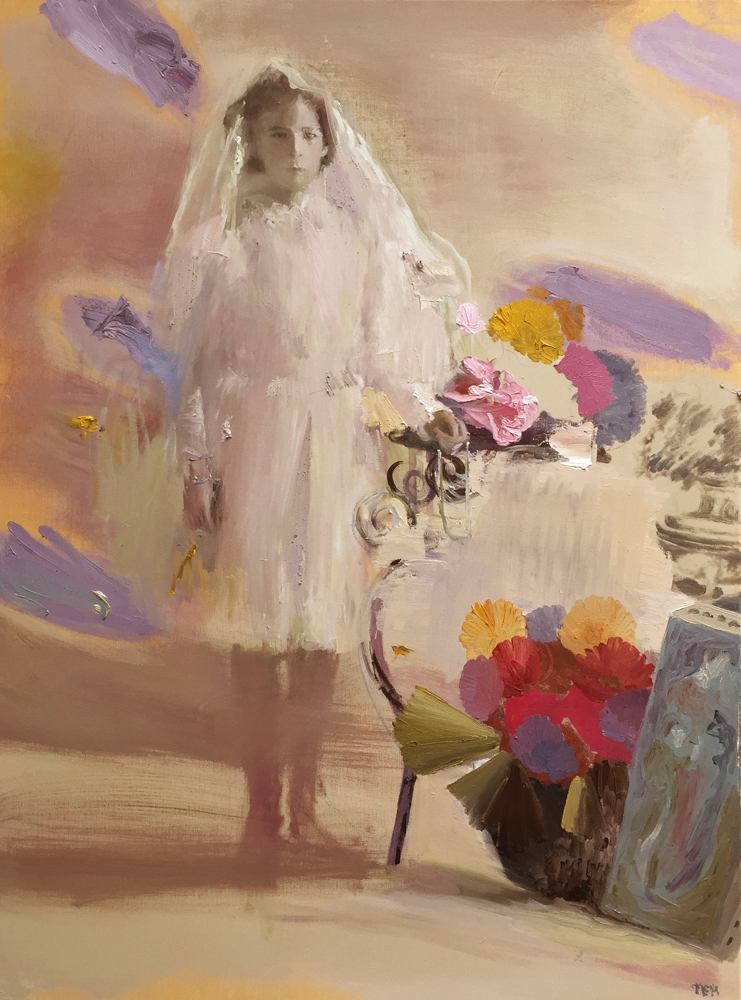
A continuation of a loosey goosey study of cartes de visite at the New York Public Library and the history of first communion photographs. In this one, the sitter (or stander) is visited by lavender orbs and a playful flower arrangement. Tucked in the lower right a very tenuous canvas of this painting, a print of which was a fixture in my grandparents’ dining room.
Related Images:
Carte de Visite #3
Kitchen
Kids in Summer
30″ x 40″
![]()
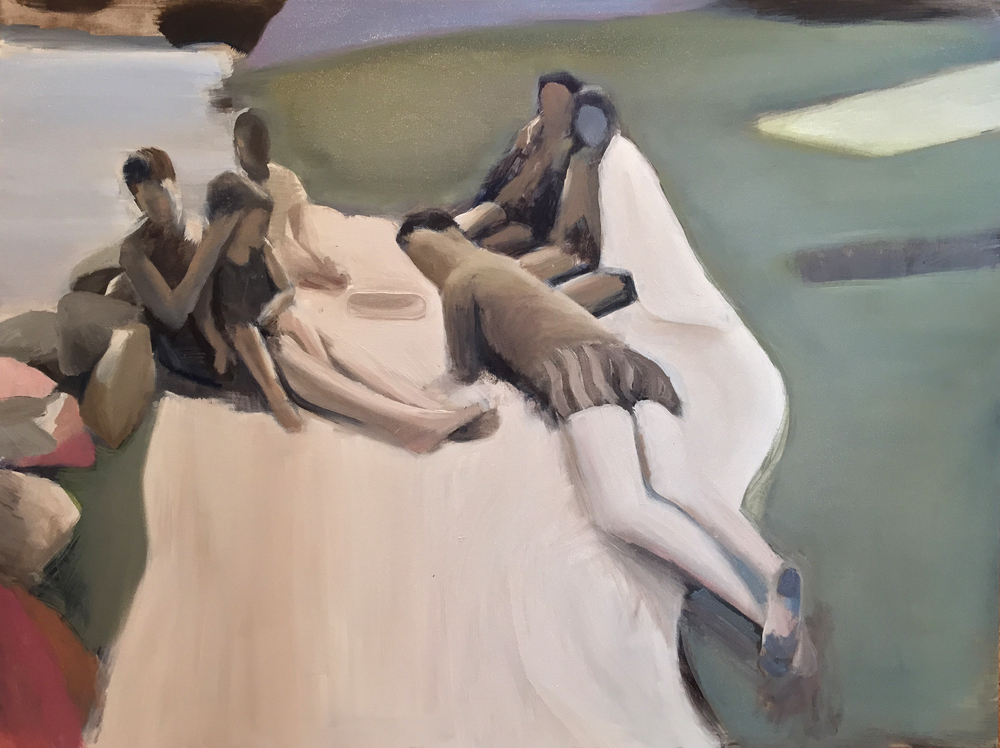
A large oil version of the kids in summer. A little undercooked for an oil, but might work for this image. Or I might go back into it a little. Or maybe not. Or maybe just to thicken, like a soup. No maybe leave it. The kids are enjoying the end of summer. The lozenge-shaped thing and the floating object.
Related Images:
Ethel
11″ x 14″
My grandmother and her mother in 1917. I guess it’s possible Vivian will have a grandchild who, a hundred years from now, will paint a picture of me holding her when she was a baby. Assuming people are still painting then. I mean, surely. They’ll need paintings for their floating houses.
Related Images:
Those Children are in the Yard Again
Concrete Fawn
End of Summer
Shore
10″ x 10″
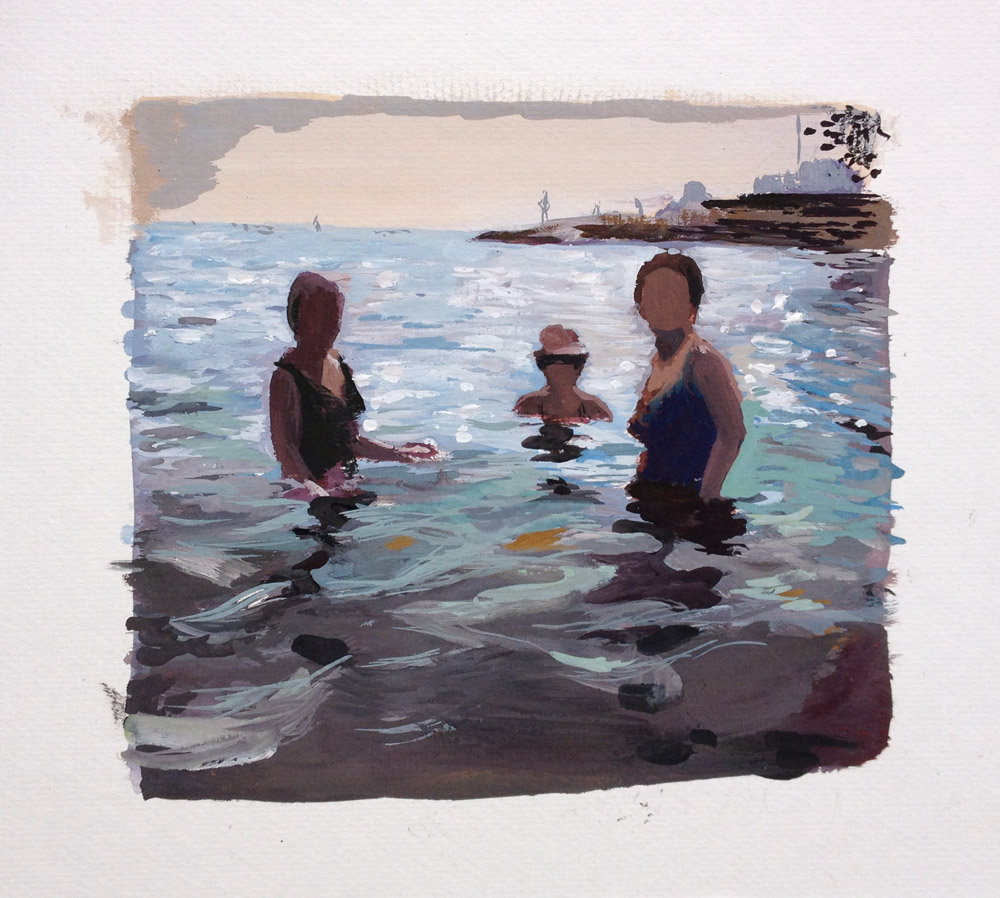
Along with an excerpt from Louise Glück’s “Summer Garden” (here in full):
sitting in the sun, her face flushed as with achievement or triumph.
The sun was shining. The dogs
were sleeping at her feet where time was also sleeping,
calm and unmoving as in all photographs.
Related Images:
King Oliver #6 (Pink & Blue)
Lazy Moon (Come Out Soon)
24″ x 30″
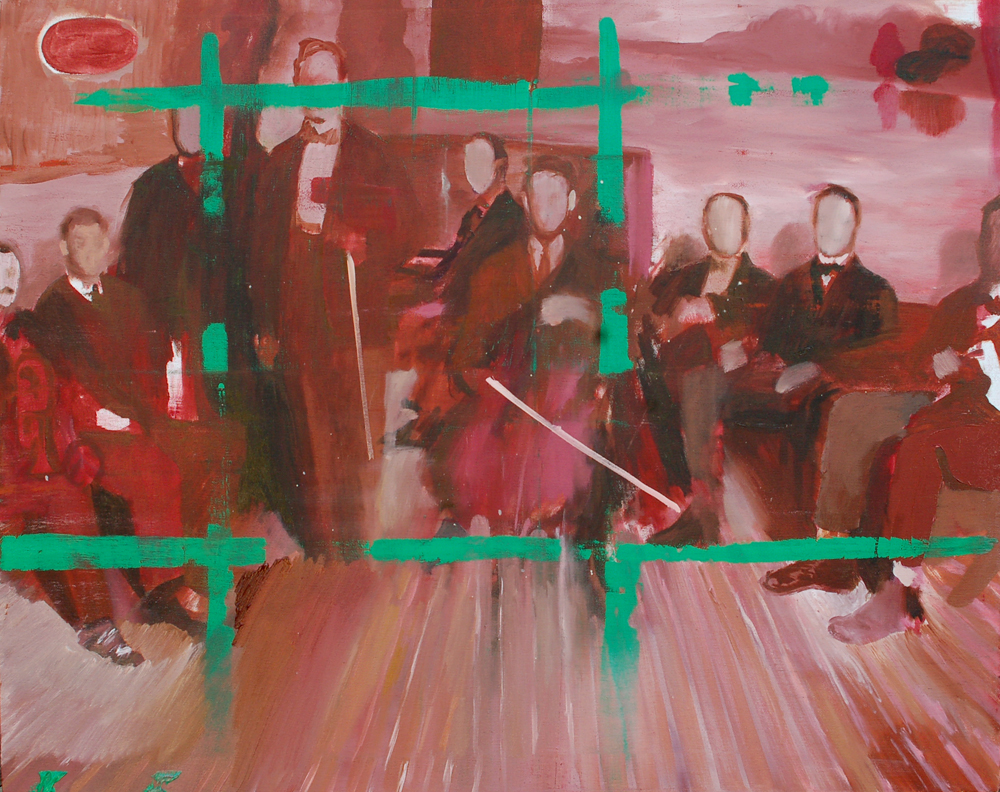
The song “Lazy Moon” was written in 1901 by Bob Cole and Rosamond Johnson, performed in unfortunate black-face by Oliver Hardy of all people in the 1930 film Pardon Us, then redeemed by Harry Nilsson in 1973, the version I know. The last line is: “What’s the matter, are you sleeping?”
If you put that line after the following passage from the epic of Gilgamesh, you could have the opening scene of a short play starring Gilgamesh and Oliver Hardy.
Gilgamesh (startled awake in the Forest of Cedars): Did you call me? Why am I awake? Did you touch me? Why am I so upset? Did a god pass? Then why do I feel so weak?
Hardy (singing): What’s the matter, are you sleeping?
Related Images:
Softer Sunshine (Take Me Home)
30″ x 40″

Continuing with paintings within paintings theme. It’s remarkable how many old photographs of musicians include paintings; the musicians posed in front of paintings, or painted backdrops, have paintings on drums, and so on. There is a lot of improvisation in these paintings, of course, this drum has a kind of figure encountering a ghost at sunset.
Related Images:
Sail Away to Dreamland
Auditorium
Back to Back
11″ x 14″
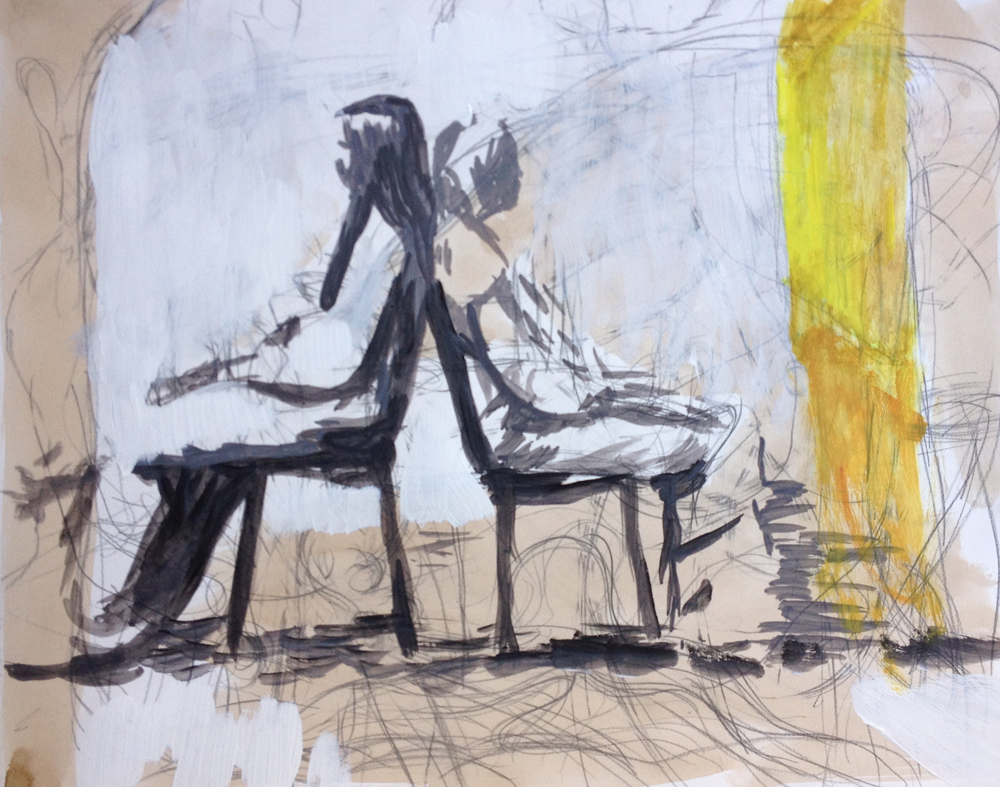
A few uplifting quotes. Uplifting to me anyway.
“To say that in painting you are always working with the unknown – in practice, that’s devastating, if you really take it on. How can you know anything for certain about what you are doing?” – Ken Kiff
“My friends tend to be writers. I think writers and painters are really all the same – we just sit in our rooms.” – Howard Hodgkin
“I constantly have to negotiate with my doubts.” – Peter Doig
“You have to have a doubt sandwich. If you have the doubt at the front, you won’t do it, and if you have doubt at the end you’re probably going to kill yourself.” – Amy Sillman
“We are not all connected. We are bags of skin. We are all separate bags
of thinking skin.” – AL Kennedy, from What Becomes
Related Images:
When You Wore a Tulip and I Wore a Red Red Rose
French Horn
24″ x 30″
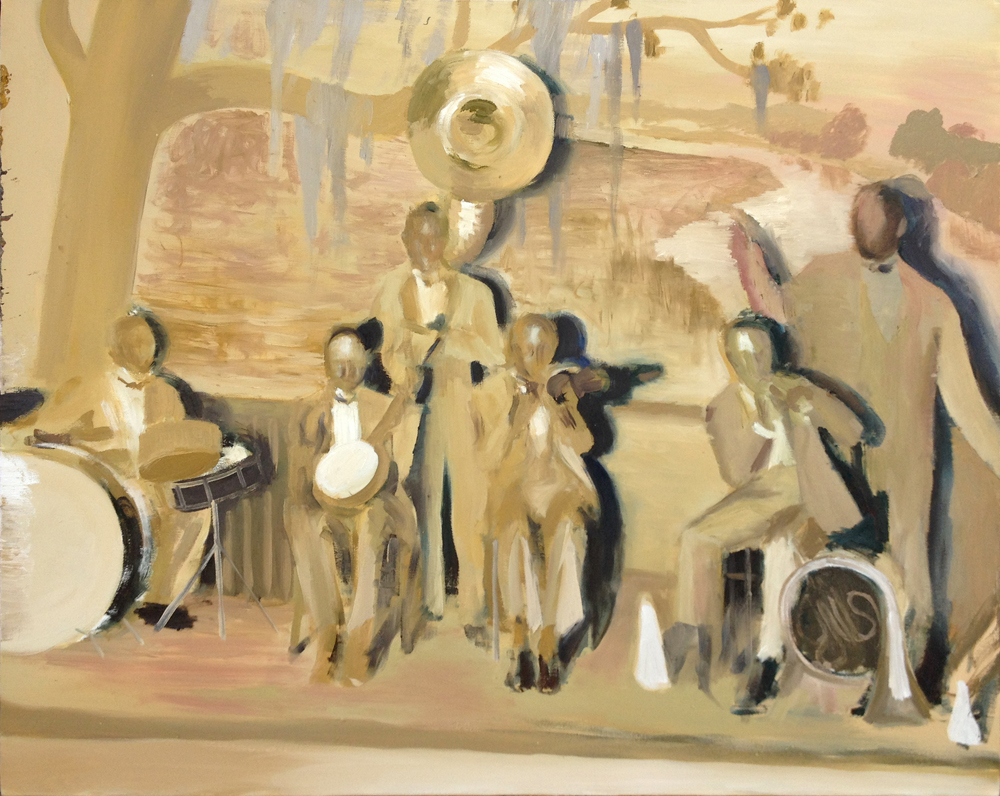
A painting is an irreproducible singularity. Part of its charm – if you like that kind of thing. Or, you may, as many have since Duchamp, find the preciousness off-putting.
One pushes paint against a canvas and, predictably, a mark is made. But every mark is unrecoverable as weather. Direct transmissions from the body, no pure concept, contaminated by countless non-verbal impressions which collect to make, when it goes well, a coherent image. And somehow a highly-personalized idiom evolves, for better or worse, which is only somewhat in the control of the painter.
Maybe it’s too corny to say ‘painting is like life’, but there it is. Maybe those who love painting feel that connection very intensely. So is basketball – like life, I mean – and also handwriting, and a cheese plate, and math.
I try not to paint “about” the Old South, but this one has its fingers near that fan. It is, to me, eerily quiet for a painting of musicians.
Related Images:
King Oliver
18″ x 24″
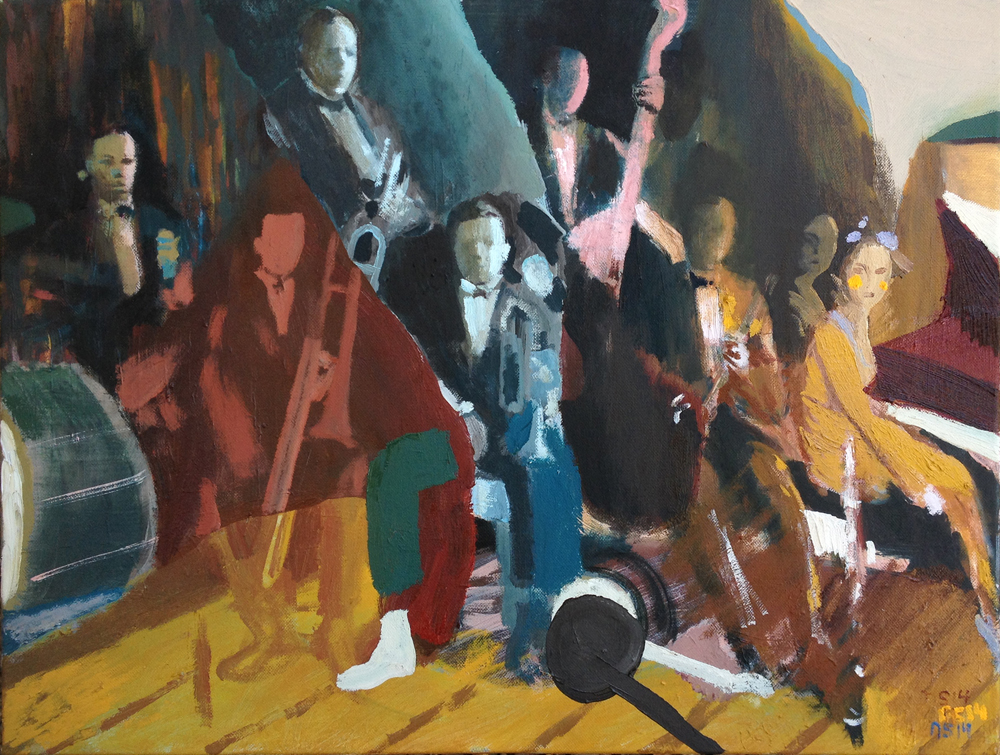
Or is apprehending an image necessarily a language-based process? Is it ever actually a simple absorption of mark, substance? As if vitamins, odor, or toxins? Is the mind ever without language long enough?
Lack of language response to image indicates indifference: unremarkable.
Or revelation: speechless.
(The first is common and long-lasting; the second, rare and fleeting.)
Here’s King Oliver and his band, a pianist and her double.
Related Images:
To Our Mothers’ and Fathers’ Mothers and Fathers
Sublimating the actual into the apocryphal – a phrase borrowed from Faulkner. Apocryphal, spurious, of questionable authority.
While this might have been painted from a photograph of my grandmother as a girl, it only remains so if I say it with words, in a title, or accompanying text. Without words, the image opens back up into the silent nature of painting. One of the greatest tensions between text and image, I think, is that text has the ability to make a claim – be truthful and authoritative or spurious and deceitful – while images do not, not on their own. They just sit there being colors and lines arranged in a certain way, more or less full or empty of meaning, based on the taste and temperament of the viewer. For all the similarities between writers and painters, this seems a fundamental difference.
Anyway, it was actually my mother.
Related Images:
Softly, As in a Morning Sunrise
Pecans and a Gray Area
20″ x 24″

Enter This Deserted House
But please walk softly as you do.
Frogs dwell here and crickets too.
Ain’t no ceiling, only blue
Jays dwell here and sunbeams too.
Floors are flowers–take a few.
Ferns grow here and daisies too.
Whoosh, swoosh–too-whit, too-woo,
Bats dwell here and hoot owls too.
Ha-ha-ha, hee-hee, hop-hoooo,
Gnomes dwell here and goblins too.
And my child, I thought you knew
I dwell here… and so do you.
– Shel Silverstein
Related Images:
Diogenes
Dichromatic Musicians (Greyish-red-yellow and Cream)
Dichromatic Musicians (Grey and Crimson)
Vibraphone
The Eighty-Ninth of May, 1930
This is a hard-boiled son of a gun, related in theme to a number of paintings I’ve done of orphans, frontal group portraits of children. Some of the children in the Orphans paintings may in fact be orphans for all I know, but more the point for me is that the source photographs are old enough to nearly ensure that all portrayed have all lived and died. Then it’s not the child, but the image of the child, that is the orphan.
The surface of this four foot square canvas has been worked and scraped many times over the last year, was nearly cut off the stretchers recently. Then I saw a grainy photograph of my great uncle’s second grade class that was recently published in the Baton Rouge newspaper. The caption recalls the two-room school house, the mule-drawn bus, the hand-me-downs. I put the canvas back on the easel again and they hopped right on.
Related Images:
Save a Song for Sunday
Bagworms and Lollipops
Whence the Florid Languor
A Stone Thus Inscribed
How You Want the Pigtail Done
Mrs. So and So Ferryboat A-Coming Sidelong
Going to Shubuta
The origin of this image is an ancestral memoir recounting a journey from Natchez, Miss. to Shubuta, Miss. in 1863.
“The party consisted of my Mother and myself, my uncle George N. Monette and my cousin Billy Phillips and my Negro nurse Emeline Netter. Although I was less than two years old at the time, I can recall as if yesterday little incidents of that journey, – the drive over rough country roads through the great forests of virgin long-leaf Pine which then covered that part of the State, the stopping at times to rest and eat lunch under the shade of the trees, and sometimes at farm houses in the “clearings,” – my uncle and cousin jumping from the wagon and walking up the long hills to ease the tired wagon mules, and at last the meeting with my dear Father at the little town of Shubuta.”
Related Images:
Pioneers in Yellow, Red, Blue
Lion on River
Bookoo and the Opportunist
Hurtin’ for Hambone
8″ x 9 1/2″
This one here is akin to an oxbow lake. That’s when a river goes from a meandering path to a straighter path and the curly crazy bit turns into a lake and the river takes a shorter route… I’m not explaining this right… here’s a diagram… oxbows are weird-shaped formations evidence of a previous flow-pattern. Such a useful concept.
Anyway, I’m making images for Kate Bernheimer’s new novel (will be a lot lot of images that I will post eventually) and in the process of trying to find the right approach, I made a whole mountain of images that will not work for the book, most are perfectly dreadful. One or two I think are interesting in their own way, oxbow style, and this is one I like. The title comes from a note I took while researching for this book, I think it was a titles of an obscure depression-era cartoon.
Related Images:
Obstaculum Cursum
7″ x 30″
I can imagine eating everything in this painting. I wouldn’t want to, but I know what it would feel like. Bouncy between the teeth. Especially the pillowy shrimp arm floating over the bed. I think of this as a Latin vocabulary learning aid that’s falling short of its goal. Not sure why Latin, could be any dead language, I suppose.
Related Images:
Wastrels Swinging
One to a Hundred #1
Emma, Her Book & Heart
30″ x 40″
This painting, still in process, and its title are taken from a book that my mother read as a girl, given to her by her great grandfather, and now I have it. I’ve been enjoying the little illustrations and just yesterday decided to read some of text. Great little coming of age story, florid and earnest, it provides courage for the developing Victorian schoolgirl.
Related Images:
Rast auf der Flucht nach Ägypten
9″ x 12″
Continuing (read: starting) the images for a forthcoming retranslation of Rilke’s cycle of poems “The Life of Mary”. A number of these will be showing up on the work-a-day in the next few months — results may range from pretty successful to laughably unsuccessful — as I try to enter a very challenging text with brown ink and gold leaf, materials I don’t understand. Will start by drawing. Here is me beating around the edges of “Rast auf der Flucht nach Ägypten” (Rest on the Flight to Egypt).
